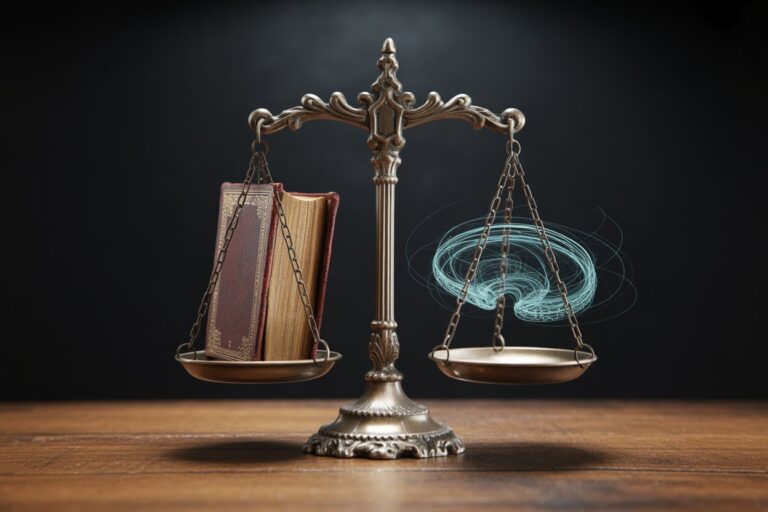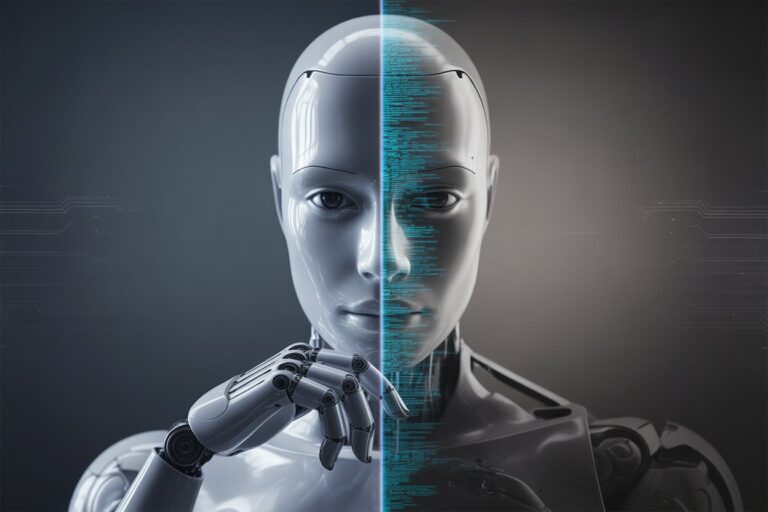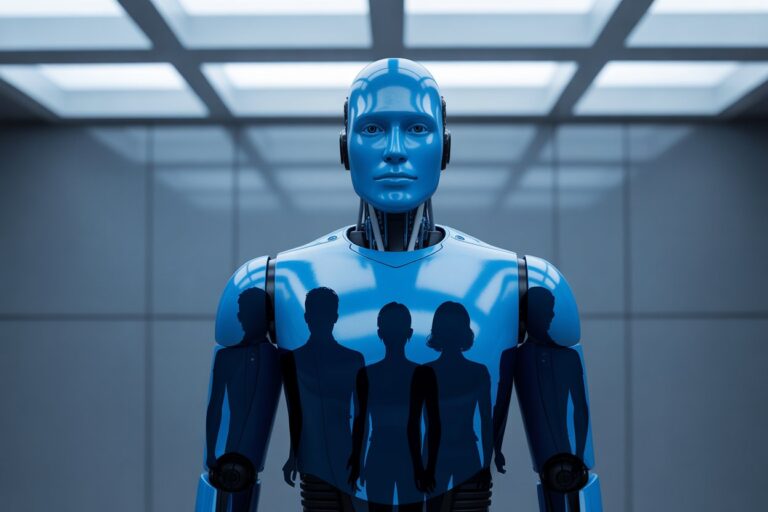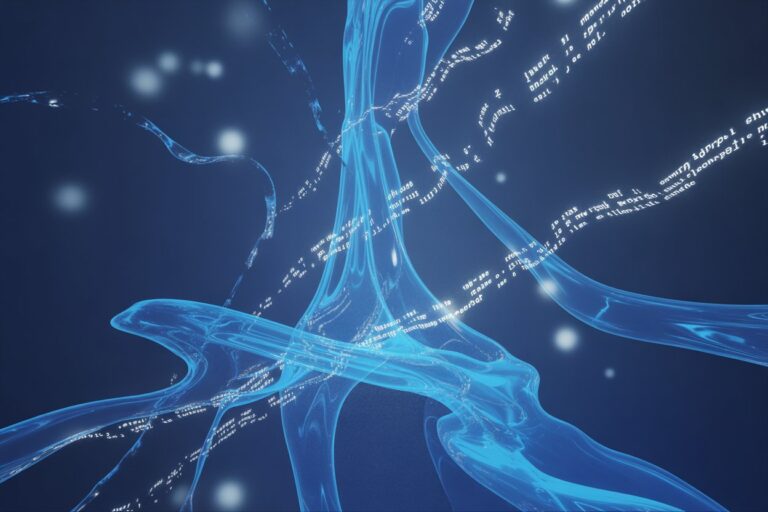AI Evidence on Trial: When Algorithms Contradict Forensic Experts
In courtrooms across the United States, artificial intelligence now analyzes fingerprints, faces, and voices faster than any human expert. But when those algorithms contradict the human witnesses who built their reputations on pattern recognition, a new question confronts judges: who decides what truth looks like in a digital age?
From Eyewitness to Machine Vision
For more than a century, forensic science has relied on the human eye and ear. Ballistics, fingerprinting, and bite-mark comparison were matters of expert judgment. Artificial intelligence has changed that equation. Tools such as NIST-certified pattern recognition systems and AI-based forensic suites like Cellebrite or Clearview AI can identify matches across millions of data points. Their results increasingly appear in criminal and civil trials, sometimes validating and sometimes disputing human findings.
Courts across the nation are now weighing two forms of specialized knowledge: the interpretive expertise of humans and the statistical precision of machines. This tension plays out in courtrooms nationwide, where defendants have challenged prosecutions built on facial recognition when algorithmic output conflicted with eyewitness or expert testimony.
Can Rule 702 Handle a Neural Network?
Under Federal Rule of Evidence 702, amended effective December 1, 2023, judges must ensure expert testimony rests on reliable methods and adequate facts. The amendments clarified that expert testimony may be admitted only if the proponent demonstrates to the court that it is more likely than not that the testimony meets all admissibility requirements. But how that applies to AI systems remains unsettled. Algorithms are rarely transparent enough to permit peer review or cross-examination. Many rely on proprietary training data shielded by trade secrets.
When an AI contradicts a human expert, the court must decide which form of opacity is more tolerable: cognitive bias or algorithmic black box. Judges are beginning to draw lines. In United States v. Gissantaner, a defendant challenged STRmix probabilistic DNA software evidence. The district court initially excluded the evidence due to concerns about the Michigan State Police laboratory’s validation of the software for complex DNA mixtures. However, the Sixth Circuit Court of Appeals reversed in 2021, ruling that the STRmix evidence met reliability standards and was admissible. The appellate court found that any lingering concerns could be addressed through cross-examination, demonstrating the evolving judicial approach to AI forensic evidence.
By contrast, in State v. Puloka, a Washington trial court in 2024 excluded video evidence enhanced by AI because the expert could not explain what data the AI models were trained on or whether they employed generative AI in their algorithms. The difference turns on interpretability, not innovation.
Cross-Examining the Algorithm
Traditional expert witnesses can be questioned about training, assumptions, and error rates. Algorithms cannot testify. Lawyers must instead probe the system’s architecture, dataset composition, and update history. Legal scholars and practitioners increasingly urge counsel to demand disclosure of model provenance, validation metrics, and data lineage as a condition of admissibility. Without that, cross-examination becomes theater: a lawyer interrogating a process no one fully understands.
Some courts now require what scholars call “algorithmic chain of custody”: documentation tracing how evidence moved through digital analysis. That emerging standard mirrors physical evidence rules and may determine whether machine output counts as testimony or tool. Recognizing this challenge, the Committee on Rules of Practice and Procedure approved proposed Federal Rule of Evidence 707 in June 2025, which would subject machine-generated evidence to the same reliability standards as expert testimony under Rule 702.
The Bias Dilemma: Precision Without Neutrality
AI’s promise of objectivity often masks its dependence on historical data. Studies by the National Institute of Standards and Technology found significant demographic disparities in facial recognition accuracy, especially among darker-skinned subjects. When such systems contradict human experts, it is unclear whether they are correcting bias or amplifying it. Courts face the paradox of choosing between two imperfect truth engines: one emotional, one statistical.
Legal frameworks are beginning to catch up. The EU AI Act, which entered into force on August 1, 2024, classifies forensic biometric identification tools as high-risk, demanding documentation, auditability, and human oversight. In the United States, Maryland enacted Senate Bill 182 in May 2024, establishing comprehensive requirements for law enforcement use of facial recognition technology. The law, which took effect October 1, 2024, prohibits using facial recognition results as the sole basis for arrest and requires disclosure when the technology is used in criminal investigations.
Colorado passed the Colorado Artificial Intelligence Act (SB 24-205) in May 2024, marking the nation’s first comprehensive state law for high-risk AI. Implementation was set for February 2026, though lawmakers have pushed key compliance deadlines to June 30 of that year. The statute draws a bright line between developers and deployers, requiring both to assess system impacts, disclose algorithmic-discrimination risks to the Attorney General, and notify consumers when automated systems play a substantial role in adverse “consequential” decisions.
More than a data-governance exercise, Colorado’s framework treats AI as infrastructure, subject to the same civic accountability as roads or power grids. Together with parallel state efforts, it signals a shift from aspirational ethics to enforceable oversight, ensuring that machine-made inferences serve the law rather than outpace it.
Judicial Calibration: Balancing Speed and Scrutiny
Courts use two competing logics. Efficiency favors automation: AI shortens backlogs, speeds analysis, and standardizes results. Legitimacy favors human verification: every output must be explainable to the losing party. The Council on Criminal Justice Task Force on Artificial Intelligence, launched in June 2025, was created to develop standards for the safe, ethical, and effective integration of AI in criminal justice. The task force released guiding principles in October 2025 emphasizing that AI systems must be thoroughly tested, monitored, and subject to meaningful human oversight.
England’s judicial guidance on AI, updated in October 2025, forbids unverified reliance on automated outputs and stresses the personal responsibility judicial office holders have for all material produced in their name. Canada’s Canadian Judicial Council guidelines, published in September 2024, stress that AI must assist but never decide. The comparative trend points toward coexistence, not competition, between human experts and digital analysis.
Rewriting Expert Testimony for the Algorithmic Era
Forensic scientists are adapting by pairing human interpretation with algorithmic corroboration. The ideal witness of the near future will explain how the model reached its conclusion, articulate its margin of error, and translate that into plain English for jurors. Law schools and bar associations are already developing curricula in AI-forensics literacy, preparing the next generation of experts to speak both technical and testimonial languages.
Courts are beginning to draw sharper boundaries around AI-assisted evidence. Judges have emphasized that algorithms, like human experts, must be transparent and testable. When parties cite generative outputs without explaining their inputs or provenance, courts treat the results as speculation rather than science. Across jurisdictions, the emerging rule is simple: AI may assist, but it cannot obscure how conclusions are reached.
Ultimately, credibility may hinge not on who wins, human or machine, but on whether each can be understood. Courts are not laboratories; they are forums of explanation. An unreadable model, however accurate, cannot meet the burden of proof.
Sources
- Canadian Judicial Council: Guidelines for the Use of Artificial Intelligence in Canadian Courts (September 2024)
- Cellebrite: Digital Intelligence Platform
- Clearview AI: Facial Recognition Technology
- Colorado General Assembly: SB24-205 Consumer Protections for Artificial Intelligence (May 2024)
- Council on Criminal Justice: Task Force on Artificial Intelligence (Launched June 2025)
- European Union: Artificial Intelligence Act (Entered into force August 2024)
- Federal Rules of Evidence 702 (Amended December 1, 2023)
- Maryland General Assembly: SB0182 Facial Recognition Technology Requirements (Effective October 1, 2024)
- National Institute of Standards and Technology: AI Risk Management Framework
- National Institute of Standards and Technology: Face Recognition Vendor Test (FRVT)
- United Kingdom Courts and Tribunals Judiciary: Artificial Intelligence (AI) Judicial Guidance (October 2025)
- United States v. Gissantaner, 990 F.3d 457 (6th Cir. 2021)
- United States Courts: Committee on Rules of Practice and Procedure
This article was prepared for educational and informational purposes only. It does not constitute legal advice and should not be relied upon as such. All cases, statutes, and sources cited are publicly available through court filings and reputable legal outlets. Readers should consult professional counsel for specific legal or evidentiary questions related to AI use in forensic practice.
See also: Delegating Justice: The Human Limits of Algorithmic Law







